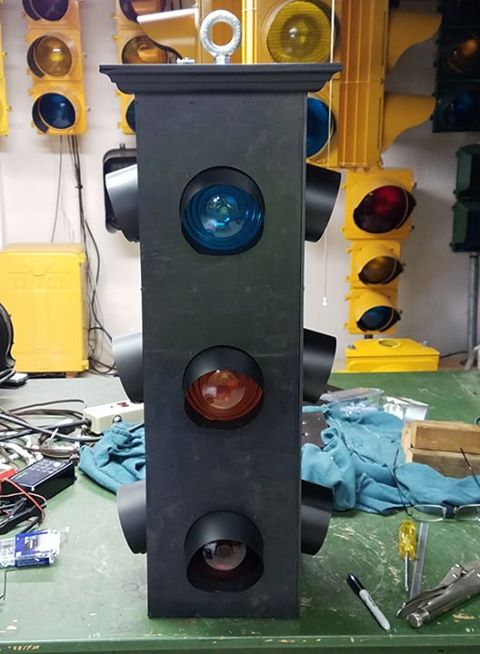Potts 4 way replica
In the summer of 2003 I paid a visit to The Henry Ford Museum in Dearborn, Michigan. In the museum hangs the first 4 way signal ever made using red, yellow and green lights. The signal was made by William Potts of the Detroit Police Department, and was made of a wood frame with a sheet metal covering. It has 3 light bulbs, similar to the old 3 bulb Darley 4 ways, so on two of the four sides, the red and green lenses had to be reversed from the positions we are used to today. The lenses were 4 inch diameter railroad lenses. It was first installed at the intersection of Woodward Ave. and Fort Street in October, 1920. It remained in service for four years.
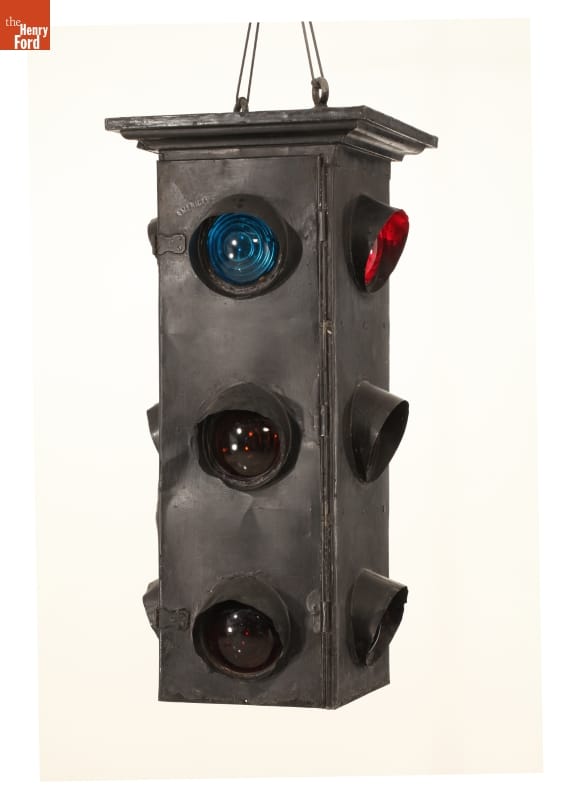
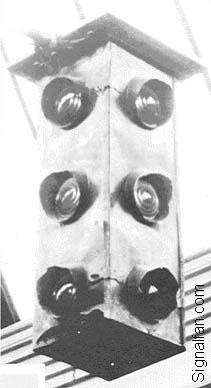
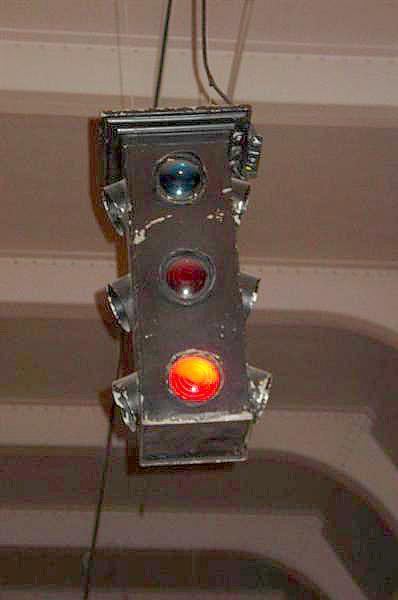
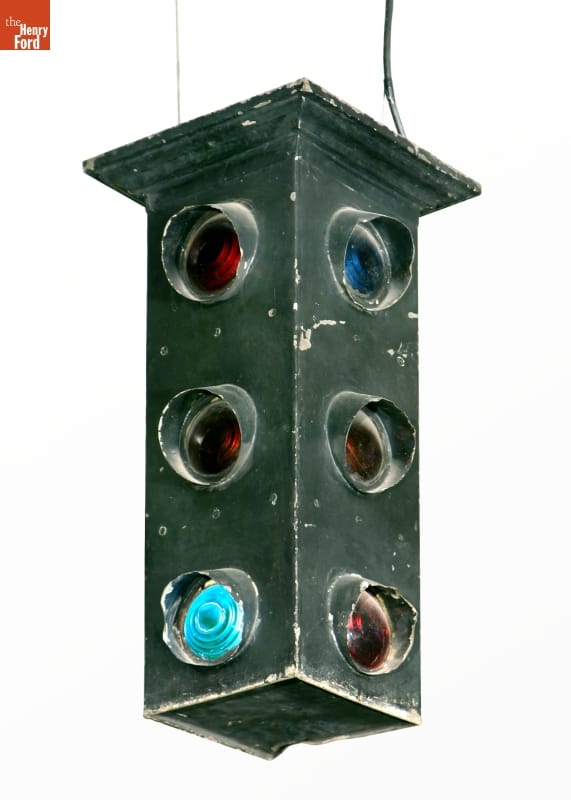
The pictures above show the signal on display in the museum. Thanks to John of www.signalfan.com, Jeff of www.railroad-signaling.com and The Henry Ford Museum for the photos.
Here is a video of the original Potts signal on display in The Henry Ford Museum. Note, the sequence is not correct for this signal. It looks like a typical signal from the front, but on the side, it goes from green to red with no yellow clearance.
After seeing this signal on display, I wanted to add one to The Traffic Signal Museum. Since there is no chance of obtaining an original, I decided that I could make a replica to look like the original. Below are photos of my version of the Potts 4 way. The goal was not to make the signal the same way Potts made his, but just to make one that looked like a Potts.
Below is a picture of all of the parts involved. The first parts I obtained for this signal were the lenses. I could not make the lenses so I had to get them first and then make the rest of the signal to fit them. From information obtained on the web, and from seeing the signal in person, I learned that the lenses were 4 inches in diameter. I found 4 complete sets of these, made by Kopp Glass, from a seller on ebay.
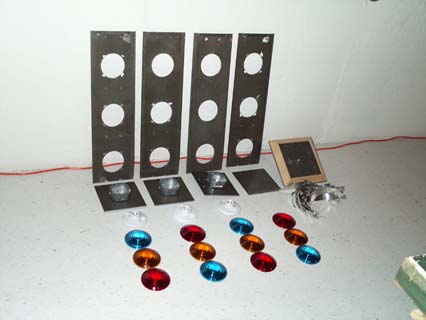
The parts that make up the body of the signal are 3/16" x 8" steel plates. Before I started the project, I emailed Henry Ford Museum and asked for the dimensions of the original. I waited for a reply for quite some time, but after a while I figured I would not get an answer. Based on pictures and the knowledge that the lenses were 4 inches in diameter, I made a guess as to the rest of the dimensions of the signal. I made my signal 8 3/16" wide and 28 1/4 inches long with 9 inches from center of lens to center of lens. After I finished making the body panels of the signal, I got an answer from Henry Ford about the size of the original Potts signal. It is 9" wide and 29" long with 9 1/2" from center of lens to center of lens. I was floored that I made all of my guess's to within an inch of the original!
Below is a picture of one of the body panels next to a standard 8 inch signal to give an idea of the size. Also pictured are the visors. This was the trickiest part to make. I found aluminum chimney flashing and cut the visors out of that, then riveted the ends together to hold the round shape.
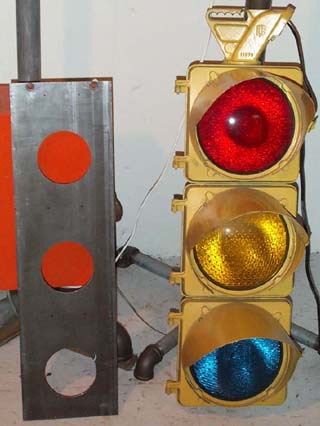
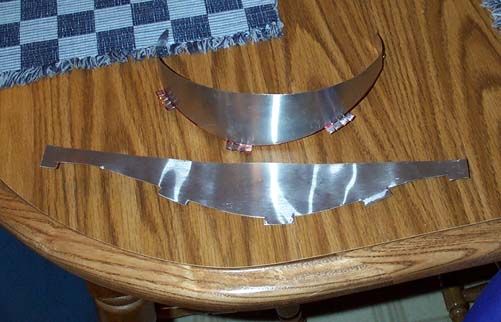
Here are some more pictures of this project as I assembled it for the first time, unpainted.
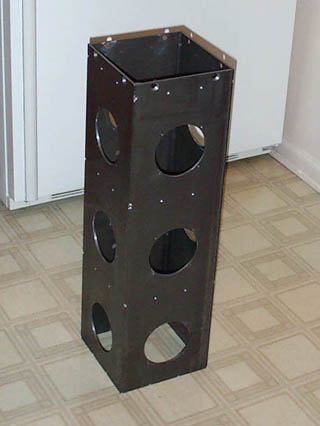
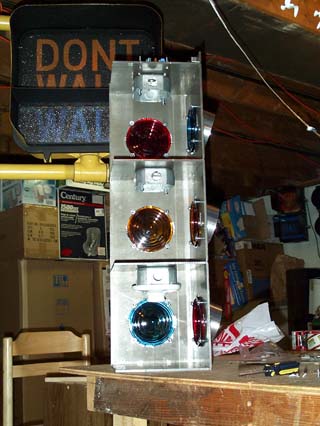
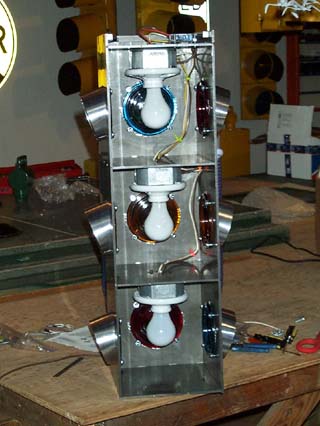
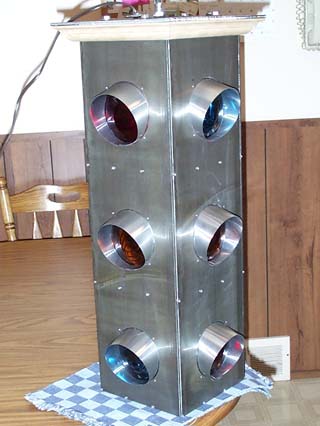
Finally, below are some pictures of this signal after it was painted. The original signal in the museum looked black to me, so I painted mine black, but the one picture above of the original looks like it could be dark green.
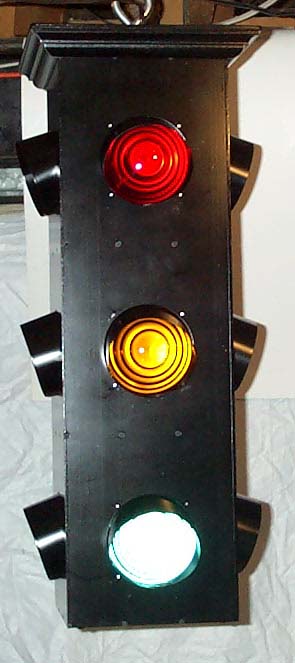
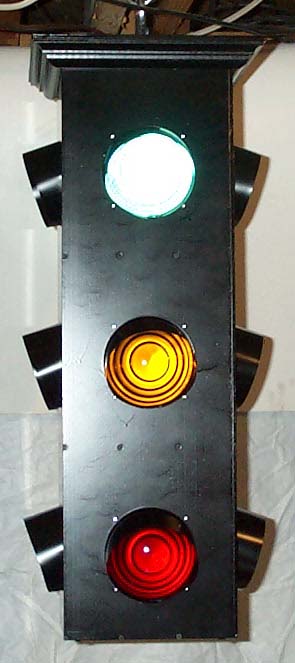
UPDATE! In 2018, I traded away my original Potts replica, but later regretted it.
After some time, I decided to have another one made up. I improved this one some from my original. Below is the "new and improved" version.
